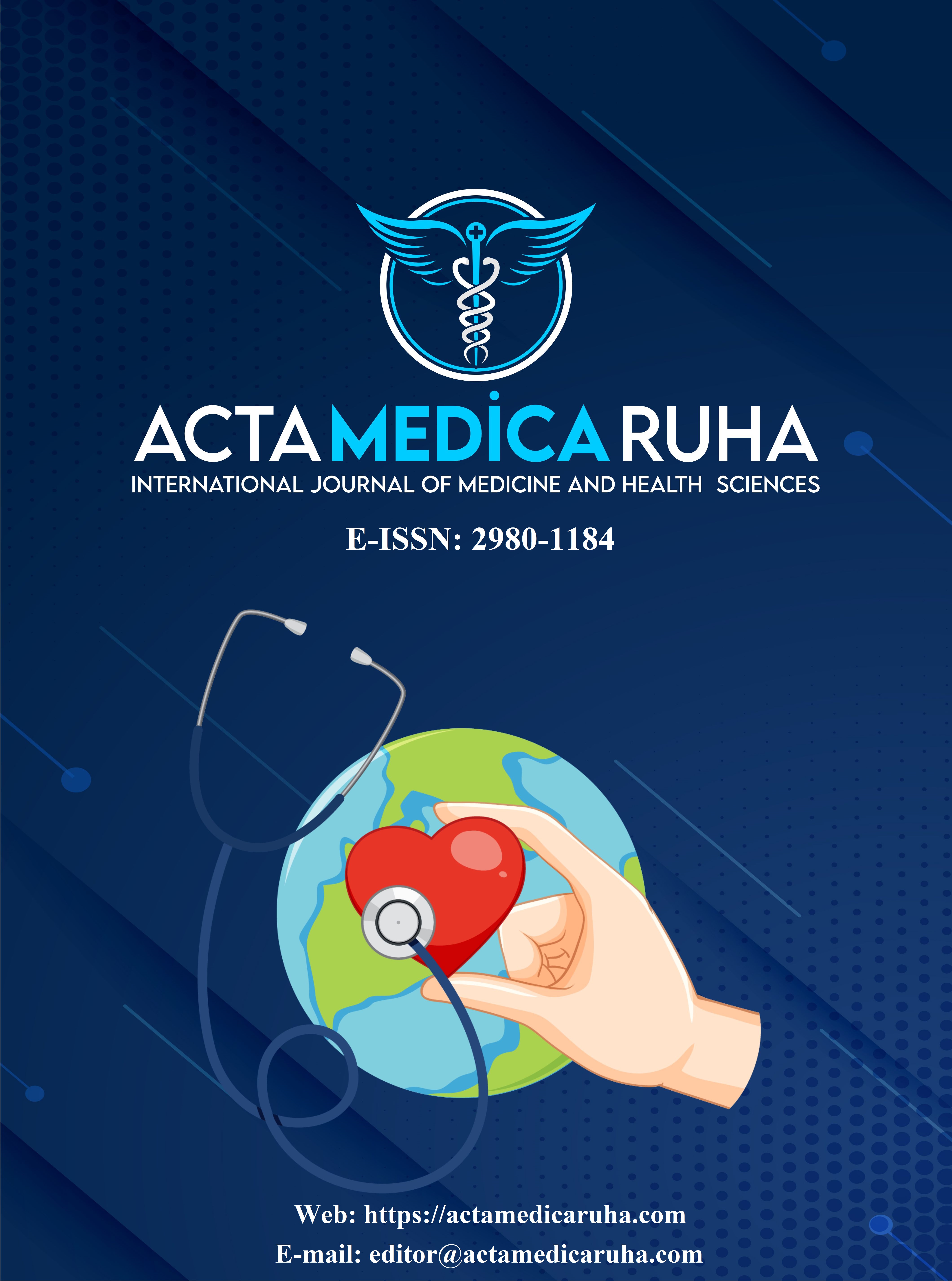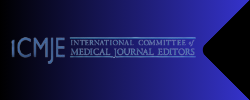The Role of Gut Microbiota and Probiotics-Prebiotics in the Treatment of Cardiovascular Diseases
Review Article
DOI:
https://doi.org/10.5281/zenodo.15030564Keywords:
CVD, Probiotics, Prebiotics, Gut Microbiota, Immune HomeostasisAbstract
Cardiovascular diseases (CVD), a major cause of morbidity and mortality worldwide, are among the most well-known and extensively studied diseases. The onset and progression of CVD are associated with multiple risk factors, among which the gut microbiota has gained significant attention over the past two decades. The microbial community colonizing the gut, referred to as the gut microbiota, plays a crucial role in human health. In particular, gut dysbiosis is directly linked to various acute and chronic dysfunctions of the host's cardiovascular system. Previous studies have demonstrated a strong association between CVD pathogenesis, gut microbiota imbalance, and inflammatory responses. Probiotics and prebiotics, which provide various health benefits to the host, have emerged as promising therapeutic interventions for many diseases. These two types of dietary supplements have the potential to reduce cardiovascular disease risks by improving the levels of cardiovascular markers such as total and low-density lipoprotein (LDL) cholesterol, high-sensitivity C-reactive protein (hs-CRP), and specific cytokines related to the inflammatory response. This review discusses the protective effects of probiotics and prebiotics in balancing structural and functional changes in the gut microbiota and maintaining immune homeostasis.
References
Roger VL, Go AS, Lloyd-Jones DM, et al. Heart disease and stroke statistics—2012 update: A report from the American Heart Association. Circulation. 2010;125(1):188. doi:10.1161/CIR.0b013e31823ac046.
Hill C, Guarner F, Reid G, et al. Expert Consensus Document: The International Scientific Association for Probiotics and Prebiotics consensus statement on the scope and appropriate use of the term probiotic. Nat Rev Gastroenterol Hepatol. 2014;11(8):506-516. doi:10.1038/nrgastro.2014.66.
Gibson GR, Roberfroid MB. Dietary modulation of the human colonic microbiota: Introducing the concept of prebiotics. J Nutr. 1995;125(6):1401-1412. doi:10.1093/jn/125.6.1401.
Cerdó T, García-Santos JA, Bermúdez MG, Campoy C. The role of probiotics and prebiotics in the prevention and treatment of obesity. Nutrients. 2019;11(3):635. doi:10.3390/nu11030635.
Tringe S, von Mering C, Kobayashi A, et al. Comparative metagenomics of microbial communities. Science. 2005;308(5721):554-7. doi:10.1126/science.1107851.
Kitai T, Tang WW. Gut microbiota in cardiovascular disease and heart failure. Clin Sci. 2018;132(1):85-91. doi:10.1042/CS20171090.
Pevsner-Fischer M, Blacher E, Tatirovsky E, Ben-Dov I, Elinav E. The gut microbiome and hypertension. Curr Opin Nephrol Hypertens. 2017;26(1):1-8. doi:10.1097/MNH.0000000000000293.
Frei R, Akdis M, O’Mahony L. Prebiotics, probiotics, synbiotics, and the immune system. Curr Opin Gastroenterol. 2015;31(2):153-158.
Kurilenko N, Fatkhullina A, Mazitova A, Koltsova E. Act locally, act globally: microbiota, barriers, and cytokines in atherosclerosis. Cells. 2021; 10:348. doi:10.3390/cells10020348.
Paganelli F, Mottola G, Fromonot J, et al. Hyperhomocysteinemia and cardiovascular disease: Is the adenosinergic system the missing link? Int J Mol Sci. 2021;22(4):1690. doi:10.3390/ijms22041690
Krasi G, Precone V, Paolacci S, et al. Genetics and pharmacogenetics in the diagnosis and therapy of cardiovascular diseases. Acta Biomed. 2019; 90:7-19. doi:10.23750/abm. v90i10-S.8748
Ma W, Zhang B, Yang Y, et al. Correlating the relationship between interarm systolic blood pressure and cardiovascular disease risk factors. J Clin Hypertens. 2017;19(5):466-471. doi:10.1111/jch.12987
Sender R, Fuchs S, Milo R. Revised estimates for the number of human and bacteria cells in the body. PLoS Biol. 2016;14(8): e1002533. doi: 10.1371/journal.pbio.1002533.
Yang X, Xie L, Li Y, Wei C. More than 9,000,000 unique genes in human gut bacterial community: Estimating gene numbers inside a human body. PLoS ONE. 2009;4(5): e6074.
Arora T, Bäckhed F. The gut microbiota and metabolic disease: Current understanding and future perspectives. J Intern Med. 2016; 280:339-349. doi:10.1111/joim.12508
Plovier H, Everard A, Druart C, et al. A purified membrane protein from Akkermansia muciniphila or the pasteurized bacterium improves metabolism in obese and diabetic mice. Nat Med. 2017; 23:107-113. doi:10.1038/nm.4236.
Jie Z, Xia H, Zhong SL, et al. The gut microbiome is an atherosclerotic cardiovascular disease. Nat Commun. 2017; 8:845. doi:10.1038/s41467-017-00900-1.
Randrianarisoa E, Lehn-Stefan A, Wang X, et al. Relationship of serum trimethylamine N-oxide (TMAO) levels with early atherosclerosis in humans. Sci Rep. 2016; 6:26745. doi:10.1038/srep26745.
Gregory JC, Buffa JA, Org E, et al. Transmission of atherosclerosis susceptibility with gut microbial transplantation. J Biol Chem. 2015;290(9):5647-5660. DOI: 10.1074/jbc.M114.618249
Li J, Lin S, Vanhoutte PM, et al. Akkermansia muciniphila protects against atherosclerosis by preventing metabolic endotoxemia-induced inflammation in ApoE-/- mice. Circulation. 2016;133(24):2434-2446. doi:10.1161/CIRCULATIONAHA.115.019645
Kothari D, Patel P, Kim SK. Probiotic supplements might not be universally effective and safe: A review. Biomed Pharmacother. 2019; 111:537-547. doi:10.1016/j.biopha.2018.12.104.
Žućko J, Starčević A, Dimić J, Oros D, Mortazavian AM, Putnik P. Probiotic—friend or foe? Curr Opin Food Sci. 2020; 32:45-49. doi:10.1016/j.cofs.2020.01.007.
Pandey KR, Naik SR, Vakil BV. Probiotics, prebiotics and synbiotics—A review. J Food Sci Technol. 2010; 52:7577-7587.
Nowak A, Paliwoda A, Błasiak J. Anti-proliferative, pro-apoptotic and anti-oxidative activity of Lactobacillus and Bifidobacterium strains: A review of mechanisms and therapeutic perspectives. Crit Rev Food Sci Nutr. 2019;59(21):3456-3467. doi:10.1080/10408398.2018.1494539
Quigley EMM. Prebiotics and probiotics in digestive health. Clin Gastroenterol Hepatol. 2019;17(2):333-344. doi: 10.1016/j.cgh.2018.09.028
Colantonio AG, Werner SL, Brown M. The effects of prebiotics and substances with prebiotic properties on metabolic and inflammatory biomarkers in individuals with type 2 diabetes mellitus: A systematic review. J Acad Nutr Diet. 2020; 120:587-607.
Mohanty D, Misra S, Mohapatra S, Sahu PS. Prebiotics and synbiotics: Recent concepts in nutrition. Food Biosci. 2018; 26:152-160. doi: 10.1016/j.fbio.2018.10.008.
Khangwal I, Shukla P. Potential prebiotics and their transmission mechanisms: Recent approaches. J Food Drug Anal. 2019; 27:649-656. doi: 10.1016/j.jfda.2019.02.003.
Wang Y, Wu Y, Wang Y, et al. Antioxidant properties of probiotic bacteria. Nutrients. 2017;9(5):521. doi:10.3390/nu9050521.
Wang Y, Wu Y, Wang Y, et al. Bacillus amyloliquefaciens SC06 alleviates the oxidative stress of IPEC-1 via modulating Nrf2/Keap1 signaling pathway and decreasing ROS production. Appl Microbiol Biotechnol. 2016;101(1):1-12. doi:10.1007/s00253-016-8032-4.
Formes H, Reinhardt C. The gut microbiota—a modulator of endothelial cell function and a contributing environmental factor to arterial thrombosis. Expert Rev Hematol. 2019;12(6):541-549. doi:10.1080/17474086.2019.1627191.
Formes H, Reinhardt C. The gut microbiota—a modulator of endothelial cell function and a contributing environmental factor to arterial thrombosis. Expert Rev Hematol. 2019;12(6):541-549. doi:10.1080/17474086.2019.1627191.
Farias DP, Araújo FF, Neri-Numa IA, Pastore GM. Prebiotics: Trends in food, health and technological applications. Trends Food Sci Technol. 2019; 93:23-35.
Jung S, Lee YJ, Kim M, et al. Supplementation with two probiotic strains, Lactobacillus curvatus HY7601 and Lactobacillus plantarum KY1032, reduced body adiposity and Lp-PLA₂ activity in overweight subjects. J Funct Foods. 2015; 19:744–52.
Jiang J, Wu C, Zhang C, et al. Effects of probiotic supplementation on cardiovascular risk factors in hypercholesterolemia: A systematic review and meta-analysis of randomized clinical trials. J Funct Foods. 2020; 74:104-177.
Lew LC, Choi SB, Khoo BY, Sreenivasan S, Ong KL, Liong MT. Lactobacillus plantarum DR7 reduces cholesterol via phosphorylation of AMPK that down-regulated the mRNA expression of HMG-CoA reductase. Kor J Food Sci Animal Res. 2018; 38:350-361.
Kim B, Choi HN, Yim JE. Effect of diet on the gut microbiota associated with obesity. J Obes Metab Syndr. 2019;28(4):216-222. doi:10.7570/jomes.2019.28.4.216.
Downloads
Published
How to Cite
Issue
Section
License
Copyright (c) 2025 Acta Medica Ruha

This work is licensed under a Creative Commons Attribution 4.0 International License.











